 | TODAY IN SCIENCE HISTORY NEWSLETTER - 12 SEPTEMBER |
| Feature for Today |
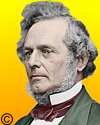 On 12 Sep 1812, Richard M. Hoe was born, the American inventor who developed and manufactured the first successful rotary printing press (1846). His first patented idea came about ten years earlier, though it concerned the grinding of circular saws. He then turned his attention to what became is lifetime career—improving the productivity of the printing press to keep up with the demands caused by increasing circulation of newspapers and journals. His early Hoe's Double Cyclinder Press was admired for its ability to turn out about six thousand impressions per hour. With a gift for invention, he continually advanced the size and production speed of his presses. Later in life, he supplied a ten-cylinder steam press to the New York World. On 12 Sep 1812, Richard M. Hoe was born, the American inventor who developed and manufactured the first successful rotary printing press (1846). His first patented idea came about ten years earlier, though it concerned the grinding of circular saws. He then turned his attention to what became is lifetime career—improving the productivity of the printing press to keep up with the demands caused by increasing circulation of newspapers and journals. His early Hoe's Double Cyclinder Press was admired for its ability to turn out about six thousand impressions per hour. With a gift for invention, he continually advanced the size and production speed of his presses. Later in life, he supplied a ten-cylinder steam press to the New York World. For more biography on the accomplishments of this significant inventor, Richard M. Hoe, see this chapter from Kings of Fortune (1888). |
| Book of the Day | |
|
| Quotations for Today | |
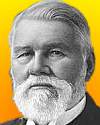 | It occurred to me that if I could invent a machine - a gun - which could by its rapidity of fire, enable one man to do as much battle duty as a hundred, that it would, to a large extent supersede the necessity of large armies, and consequently, exposure to battle and disease [would] be greatly diminished. |
 | That one must do some work seriously and must be independent and not merely amuse oneself in life—this our mother [Marie Curie] has told us always, but never that science was the only career worth following. |
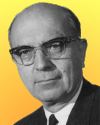 | Shoe leather epidemiology. [Langmuir stressed that investigators go into the field to collect their own data and directly view the locale of a public health problem. His graduates wore lapel pins of a shoe with a hole in the sole.] |
| Quiz | |
| Before you look at today's web page, see if you can answer some of these questions about the events that happened on this day. Some of the names are very familiar. Others will likely stump you. Tickle your curiosity with these questions, then check your answers on today's web page. | |
| Births | |
 | Alexander Langmuir, born 12 Sep 1910 was a US epidemiologist who created and led the Epidemic Intelligence Service and from 1949, directed for 20 years, the epidemiology branch of the National Communicable Disease Center in Atlanta. His efforts contributed to the virtual elimination of a certain disease.  Can you name this disease? Can you name this disease? |
 | Ir�ne Joliot-Curie, born 12 Sep 1897, daughter of Nobel Prize winners Pierre and Marie Curie, was also in her turn, a French physical chemist, She and her husband were jointly awarded the 1935 Nobel Prize. For what achievement was the 1935 Nobel Prize awarded? For what achievement was the 1935 Nobel Prize awarded? |
| Deaths | |
Peter Mark Roget (1779-1869) was an English physician who, in 1814, invented a "log-log" slide rule for calculating the roots and powers of numbers. After studying medicine at the University of Edinburgh, he helped establish a medical school at Manchester, and practiced in London (1808-40). Upon retirement, from age 61 to 73, he produced a famous book. For what book is he famous? For what book is he famous? | |
| Events | |
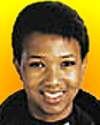 | On 12 Sep1992, the crew of the Shuttle Endeavour included the first African-American woman in space, as a Science Mission Specialist aboard Endeavour. During the eight-day mission, she conducted space-sickness experiments and conducted research on bone loss in zero gravity. Can you name this astronaut? Can you name this astronaut? |
On 12 Sep 1940, five schoolboys exploring the Grotte de Lascaux, in France, made a remarkable discovery.  Can you describe this discovery? Can you describe this discovery? | |
| Answers |
| When you have your answers ready to all the questions above, you'll find all the information to check them, and more, on the September 12 web page of Today in Science History. Or, try this link first for just the brief answers. Fast answers for the previous newsletter for September 11: the first to propose that matter is continuously created throughout the universe. • fine optical instruments • the experimental study of the origin and chemical composition of rocks [Note: the petr- in petroleum means “rock,” -oleum refers to “oil,” so petrology is the study of rock itself, not primarily related to petroleum!!] • 250 miles per year • the Beagle. |
| Feedback |
 If you enjoy this newsletter, the website, or wish to offer encouragement or ideas, please send feedback by using your mail reader Reply button. If you enjoy this newsletter, the website, or wish to offer encouragement or ideas, please send feedback by using your mail reader Reply button. Your click on a StumbleUpon, Google+ or Facebook social button on the site webpages is also a welcome sign of appreciation. Thank you for using them. |
| Copyright |
| To find citations for quotations go to the corresponding webpage by clicking on the “quotes” balloon icon. Sources for the thumbnails appear on today's webpage with the corresponding item. � This newsletter is copyright 2013 by todayinsci.com. Please respect the Webmaster's wishes and do not put copies online of the Newsletter � or any Today in Science History webpage. (If you already have done so, please remove them. Thank you.) Offline use in education is encouraged such as a printout on a bulletin board, or projected for classroom viewing. Online, descriptive links to our pages are welcomed, as these will provide a reader with the most recent revisions, additions and/or corrections of a webpage. For any other copyright questions, please contact the Webmaster by using your mail reader Reply button. |
--
If you do not want to receive any more newsletters, Unsubscribe
To update your preferences and to unsubscribe visit this link
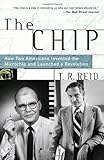

Δεν υπάρχουν σχόλια:
Δημοσίευση σχολίου